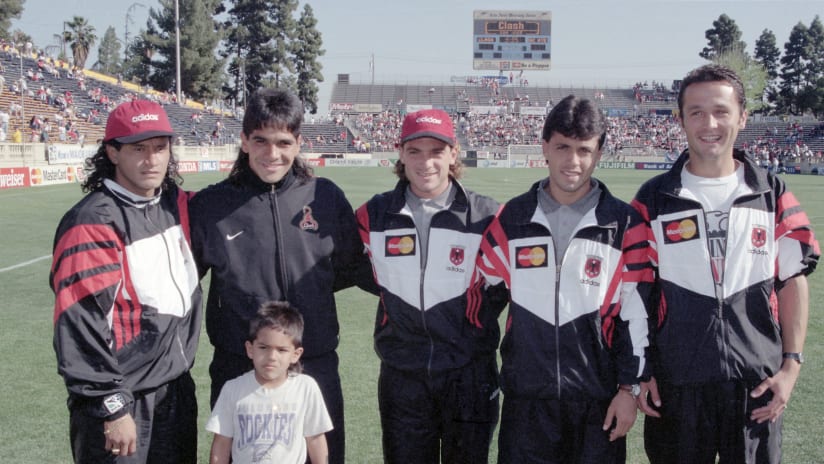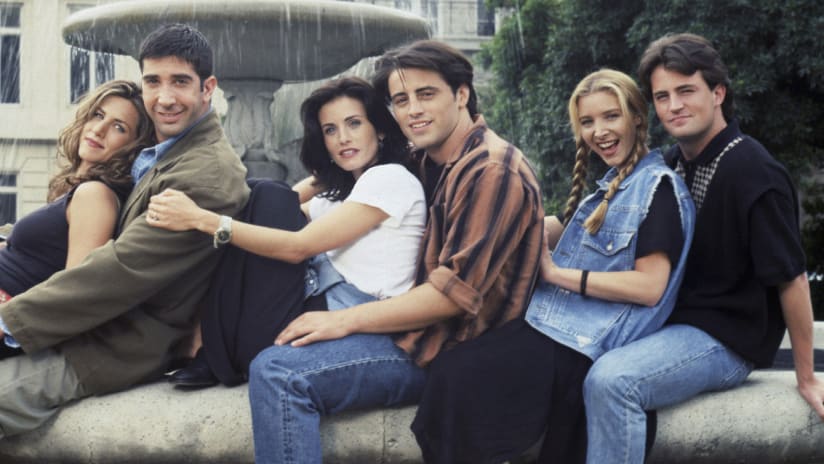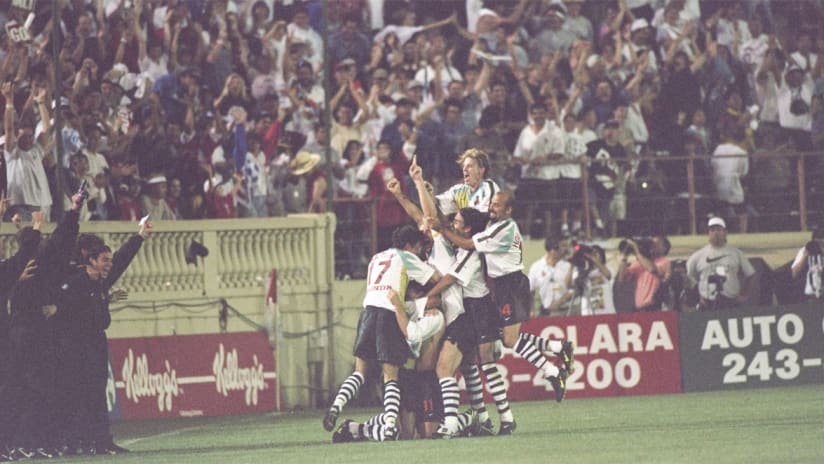EDITOR'S NOTE: To mark the anniversary of Major League Soccer's first-ever game between the San Jose Clash and D.C. United on April 6, 1996, MLS YouTube, Twitter and Facebook channels will air the game at 4 pm ET this Monday. A part of MLS Classics: Remix, the enhanced broadcast will feature alternative commentary from MLS legends Eric Wynalda and Jeff Agoos, as well as current D.C. United goalkeeper Bill Hamid and MLSsoccer.com's David Gass. You can also now follow the @MLSin96 Instagram account, which will chronicle the entirety of the inaugural MLS season in “real-time” throughout 2020.
It was 20 years ago today that the San Jose Clash and D.C. United launched MLS with a much-publicized, nationally televised match in San Jose’s Spartan Stadium. And as it turned out, much was in a team name.
The history behind how the Clash – now the San Jose Earthquakes – and D.C. United got their names and logos represents the two ends of the spectrum for MLS’ early, fundamental question. What was the key to marketing a soccer league to a nation that hadn’t yet fully embraced soccer?
D.C. United represented the traditionalist end of the spectrum, which favored marketing to fans raised on European, Mexican, and South American brands of soccer. The Clash, on the other hand, represented one of the names created by Nike to appeal to young soccer fans. The idea? To mark soccer as vibrant, of the current era (that is to say, the extreme 1990s), and decidedly American.
Kevin Payne, D.C. United’s first general manager, recalls his team’s process clearly. He knew that the team wanted a name speaking to both the soccer community as well as the D.C. community.
During a lunch with his US Soccer partner colleagues, while talking about options for the name, someone in their employ blurted out, “Well, why don’t you just call it United? That’s what all the soccer teams are called.” Though there was certainly more to the team’s branding than this single moment of snark, the group tried out the sound of D.C. United in that moment. Payne added it the list of possible names, and it eventually won out over candidates like Justice, Force, and Spies.
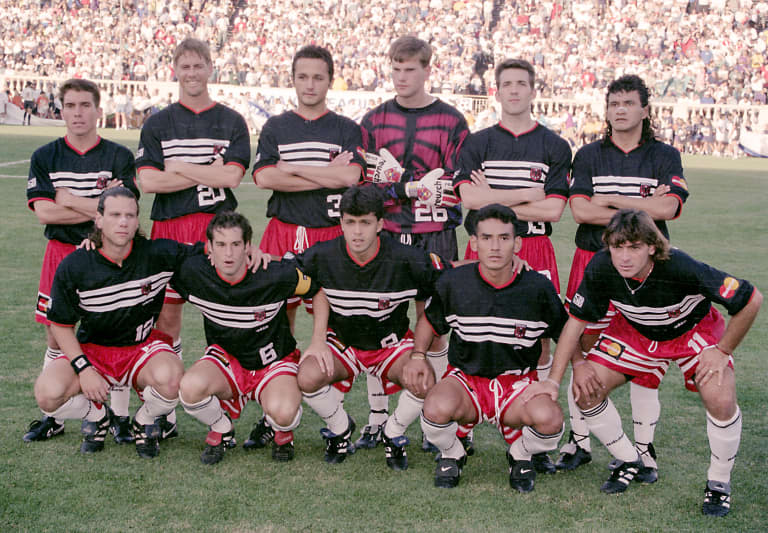
Photo via Tony Quinn
The Clash, on the other hand, was a Nike concoction. Randy Bernstein, MLS’ Chief Marketing Officer during the pivotal 1995-1999 period when the league was born, remembers a collaborative process overall. MLS, according to Bernstein, wanted to put branding in the hands of multiple companies known for creating soccer teams’ looks.
Reebok worked in concert with the Kraft family to create the New England Revolution’s brand and patriotic color scheme, while Adidas worked with D.C. United and Columbus Crew on their more traditional uniforms (as well as the Kansas City Wiz’s rainbow). Puma worked with the Colorado Rapids, and even the refs got their own exclusive kit-maker in Umbro.
But Nike – thanks to its financial commitment to MLS and its reputation as an innovative global brand – was assigned to create brands and looks for half of the incoming MLS franchises.
Bernstein notes that Nike worked closely with the league in creating brands, tailoring names and colors to the specific markets where the teams would play, as well as what he judiciously describes as “what colors were interesting to people during that time.”
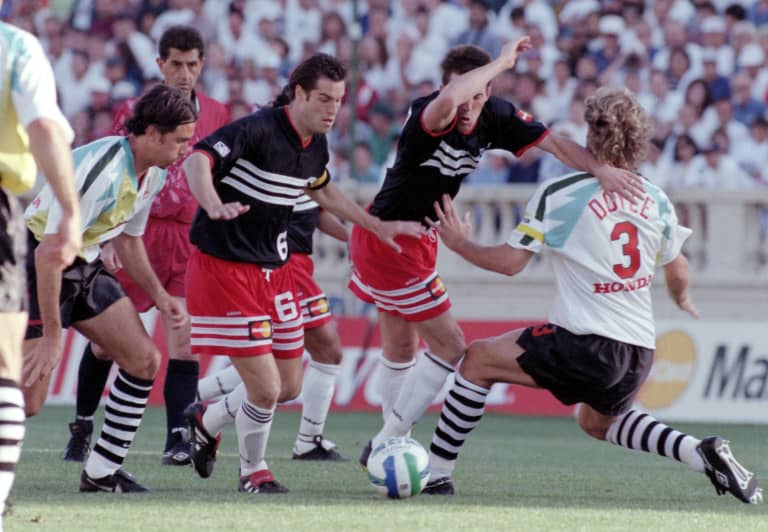
Photo via Tony Quinn
“We were operating on a shoestring budget compared to what the league has now,” Bernstein says. “When we had the opportunity to use the expertise of global powerhouse like Nike, Adidas, and Reebok, we were so thrilled to be able to have them as resources. This was very meaningful to MLS. At the time, we could have never afforded to hire those people independently.”
The Clash’s brand wasn’t quite as far afield as the Tampa Bay Mutiny, which controversially married a name suggesting nautical insurrection with a mutant bat. Still, the Clash’s color selection–involving celery green, forest green, red, and teal (the MVP of 1990s colors) – and its red scorpion logo certainly raised some eyebrows when San Jose’s brand rolled out.
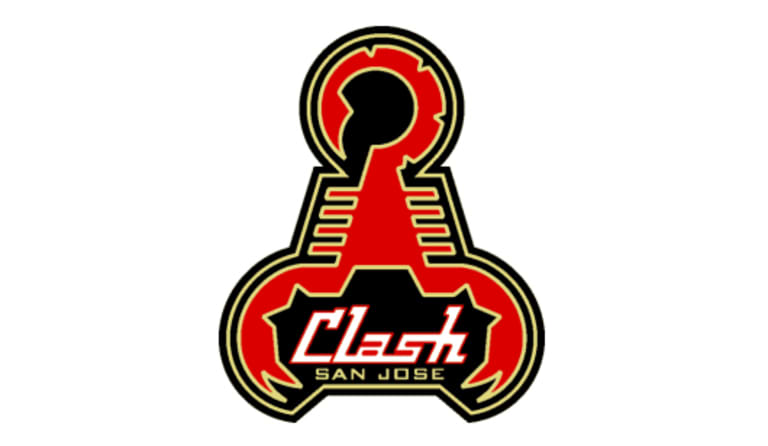
“It’s an exciting, innovative, non-traditional and provocative nickname, exactly the kind of thing we want in a league,” Clash President and GM Peter Bridgwater said in the official MLS press release in October 1995 announcing the team’s identity. Bridgwater also noted, in the release, that the name fit the type of team he wanted – an “aggressive, attacking team … winning by scores like 4-3, not 1-0.”
Of course, the Clash would go on to win their inaugural match against D.C. United by that famous 1-0 scoreline, with Eric Wynalda’s late-game heroics sparing MLS the indignity of a scoreless draw in its debut. Wynalda remembers much about that day – Bridgwater's pregame excitement, the amazement of being part of a professional soccer match in the US, the recognition that his 89th-minute successful run to goal would be his last chance to score.
But he also remembers bemusement over the multi-colored jerseys Nike had gifted the team. “The real surprise for us was the away jerseys,” Wynalda says. “We didn’t see them until our first road game; I think they might have been hiding them from us. I saw them and asked, ‘Wait, are we going to warm up in those, or are we actually playing in those?’”
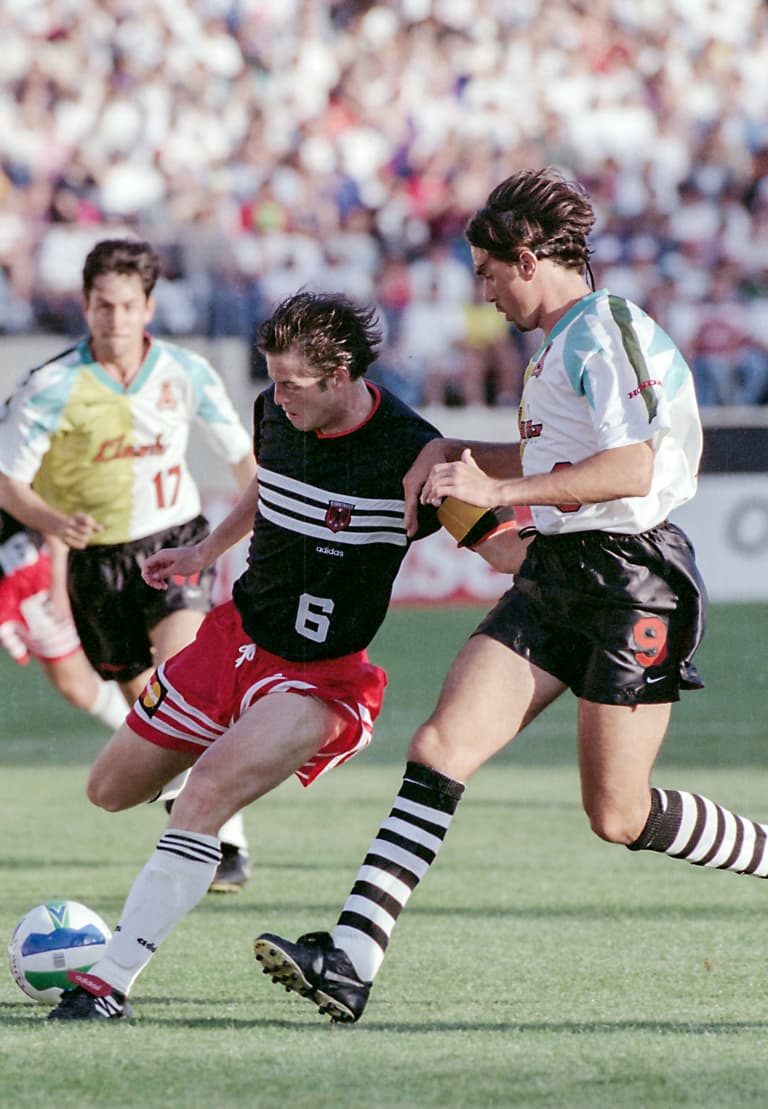
Photo via Tony Quinn
In fact, he says he remembers being jealous of D.C. United’s uniforms. “I thought,” he says, “‘Those are uniforms that look like they could win the league.’”
Though D.C. United’s uniforms might have looked sharp, the team didn’t quite do so. Payne recalls that the team’s then-head coach Bruce Arena was still splitting time between the US Olympic team and D.C. United.
“I won’t go as far as Bruce who has called it ‘the worst soccer game in history,” Payne says, but he contends the overall play was disappointing. And yet, he remembers the atmosphere around the game being fantastic. “It was an absolutely perfect day, the weather was gorgeous. There were huge throngs of people around the venue before the game. It was festive, encouraging, and felt like a big event. We all felt like, ‘Wow, maybe this is really going to work.”
And, ultimately, April 6, 1996 was important in that launched a soccer league that was boldly distinct from other world leagues, by visual design. Of the five brands Nike created for the first season, only the LA Galaxy remains. But the Clash, the Mutiny, the Dallas Burn and New York/New Jersey MetroStars remain integral names in the league’s history.
“We were trying to create something that would be talked about, that would be debated, that would be on the edge,” Bernstein says. He loved seeing the commemorative throwback Clash shirts handed out to Earthquakes fans at last Saturday’s Quakes-D.C United match celebrating the anniversary.
“I’m glad they’re recognizing it 20 years later. I’m glad there’s a league 20 years later,” he says. “That was the ultimate goal.”

